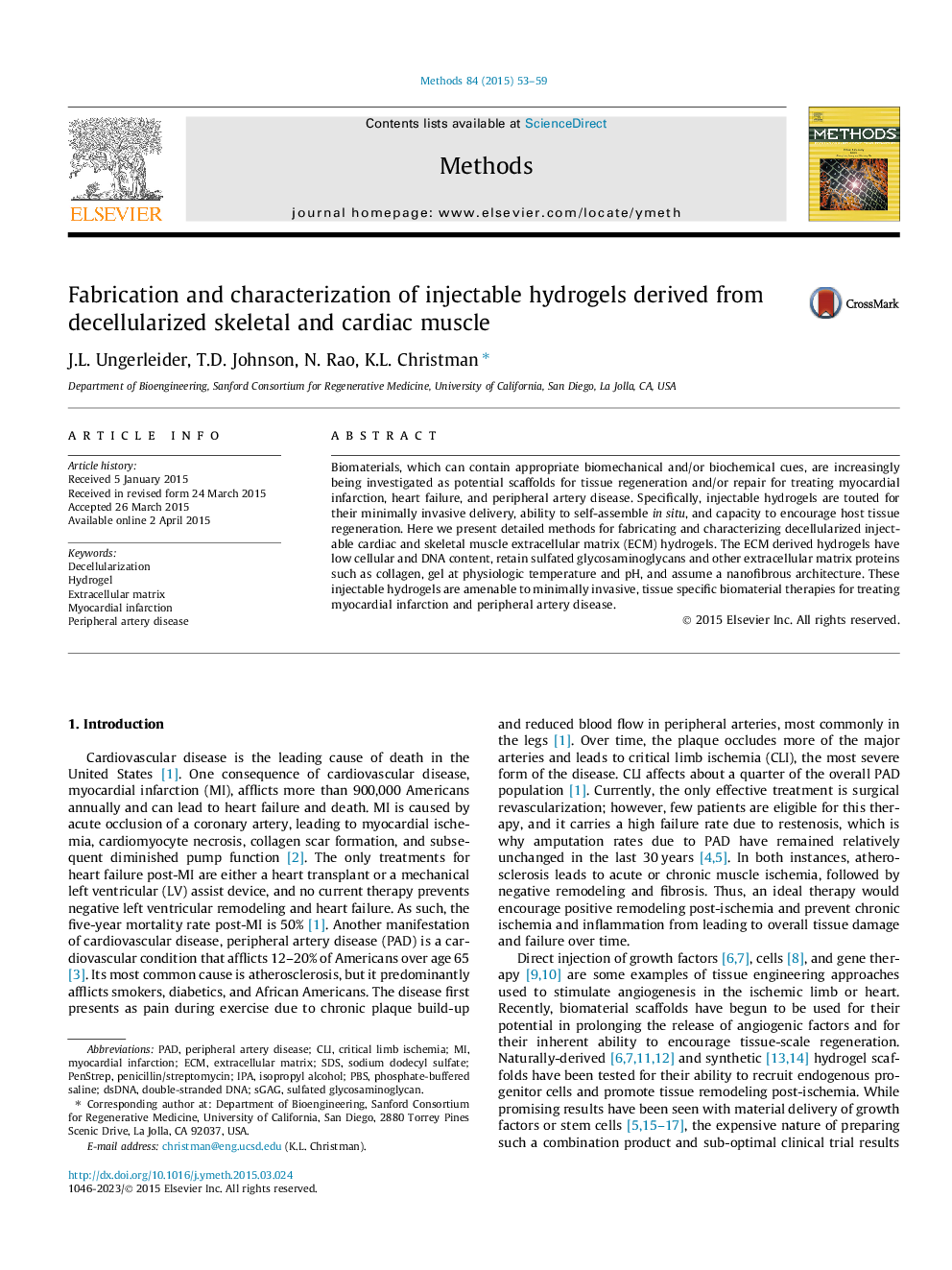| Article ID | Journal | Published Year | Pages | File Type |
|---|---|---|---|---|
| 1993265 | Methods | 2015 | 7 Pages |
•Injectable ECM hydrogels fabricated from decellularized porcine muscle.•Hydrogels are characterized for biochemical, structural, and mechanical properties.•ECM hydrogels can be used as minimally invasive scaffolds for tissue engineering.
Biomaterials, which can contain appropriate biomechanical and/or biochemical cues, are increasingly being investigated as potential scaffolds for tissue regeneration and/or repair for treating myocardial infarction, heart failure, and peripheral artery disease. Specifically, injectable hydrogels are touted for their minimally invasive delivery, ability to self-assemble in situ, and capacity to encourage host tissue regeneration. Here we present detailed methods for fabricating and characterizing decellularized injectable cardiac and skeletal muscle extracellular matrix (ECM) hydrogels. The ECM derived hydrogels have low cellular and DNA content, retain sulfated glycosaminoglycans and other extracellular matrix proteins such as collagen, gel at physiologic temperature and pH, and assume a nanofibrous architecture. These injectable hydrogels are amenable to minimally invasive, tissue specific biomaterial therapies for treating myocardial infarction and peripheral artery disease.
